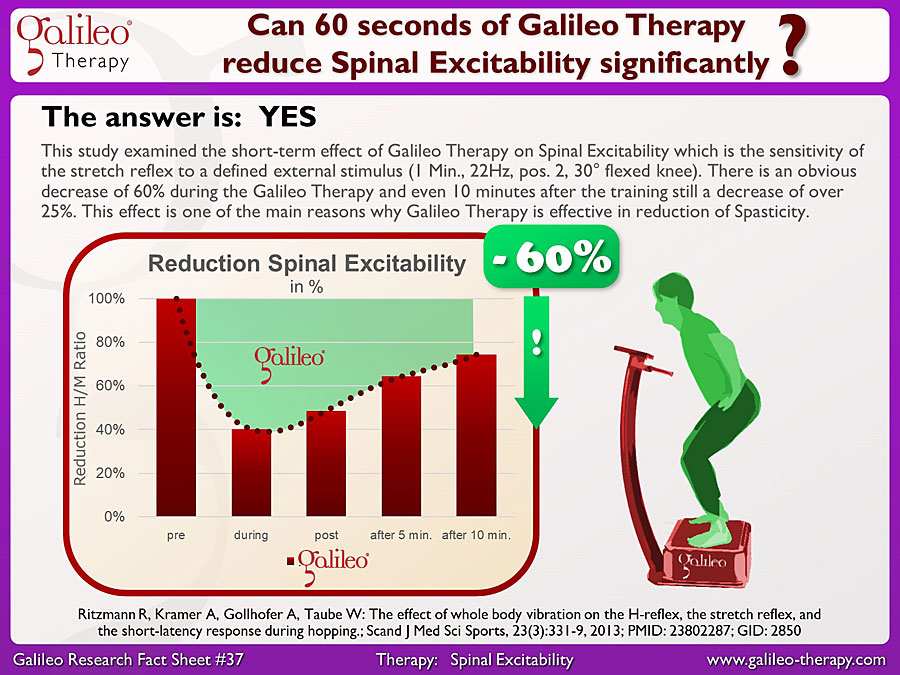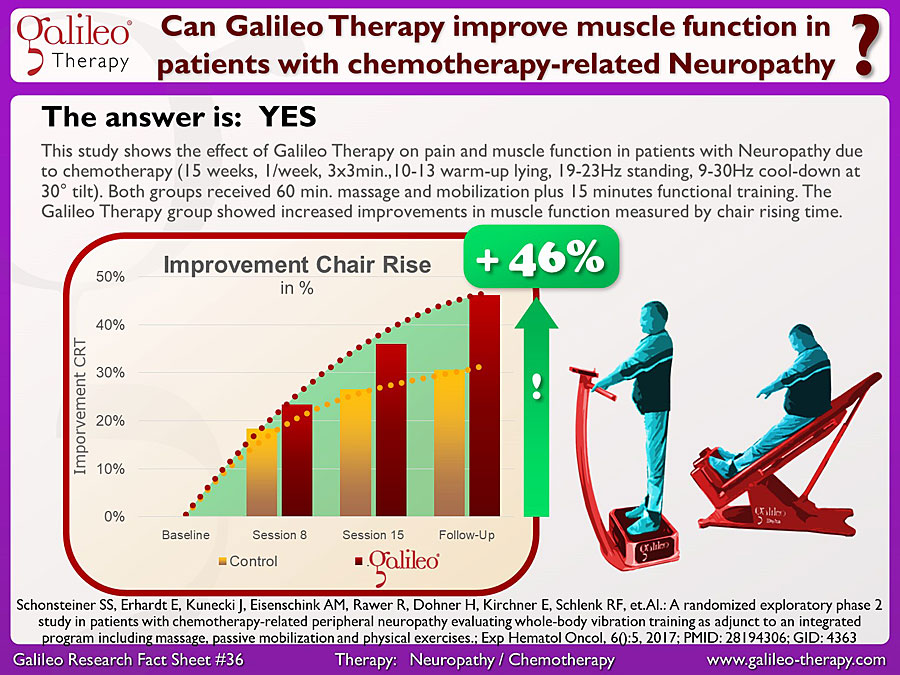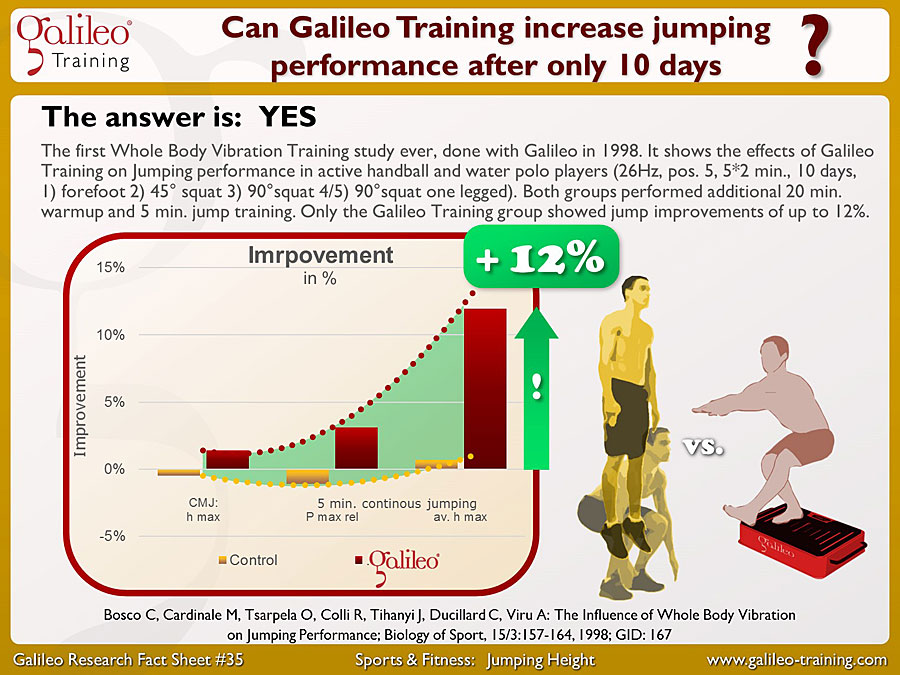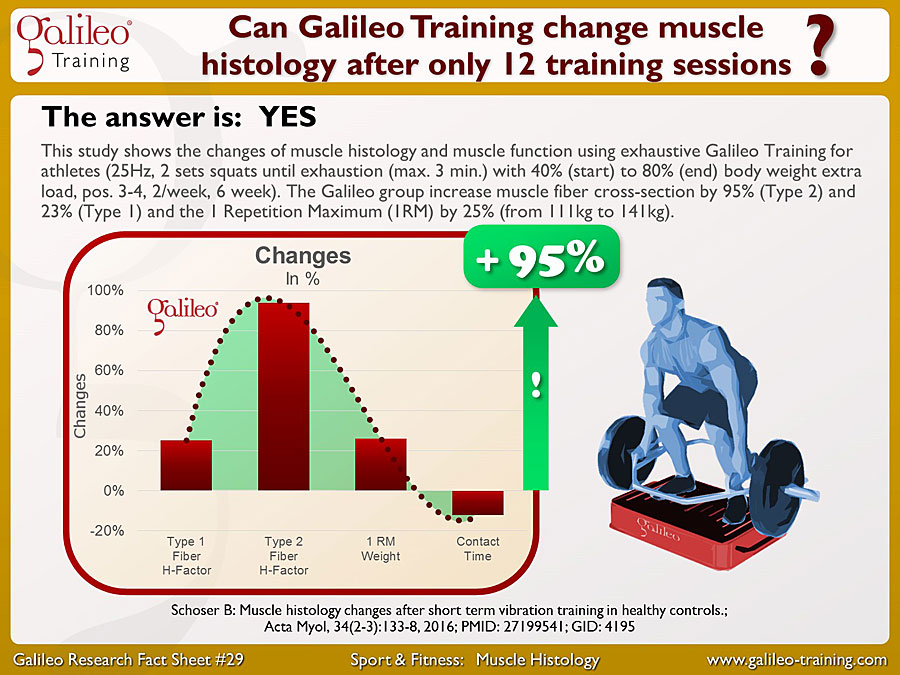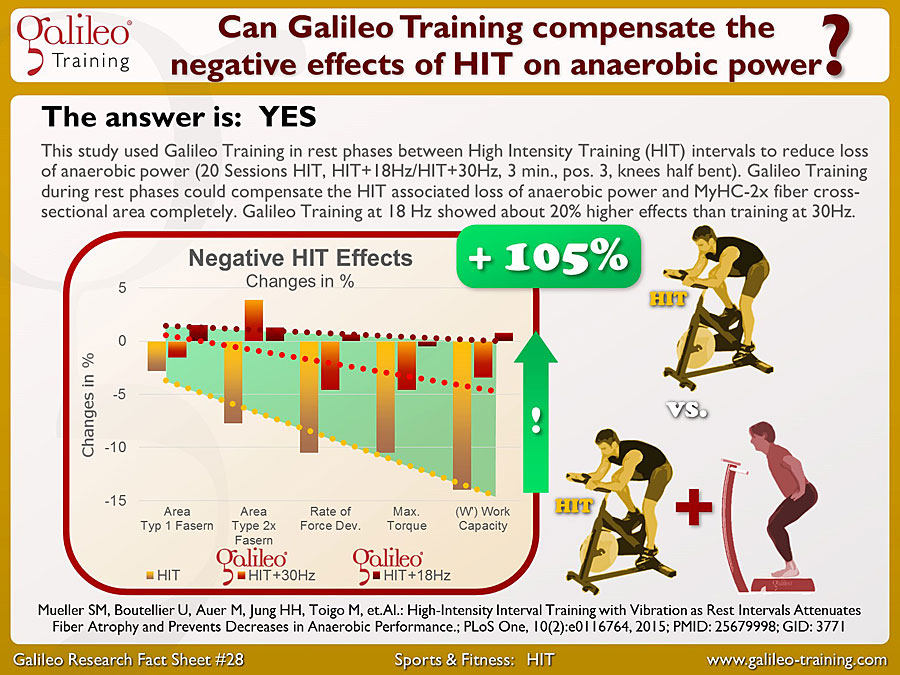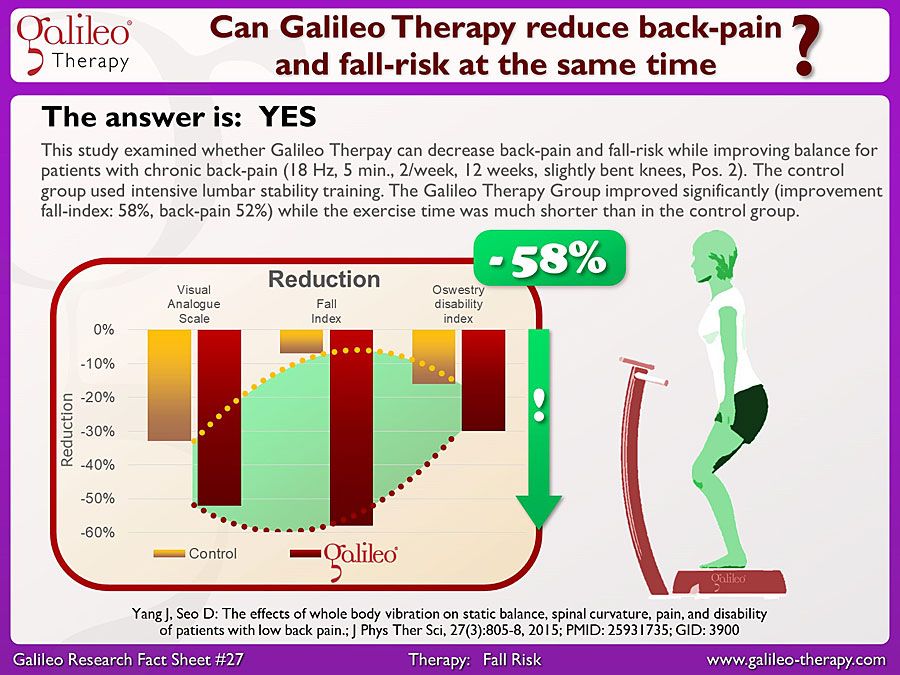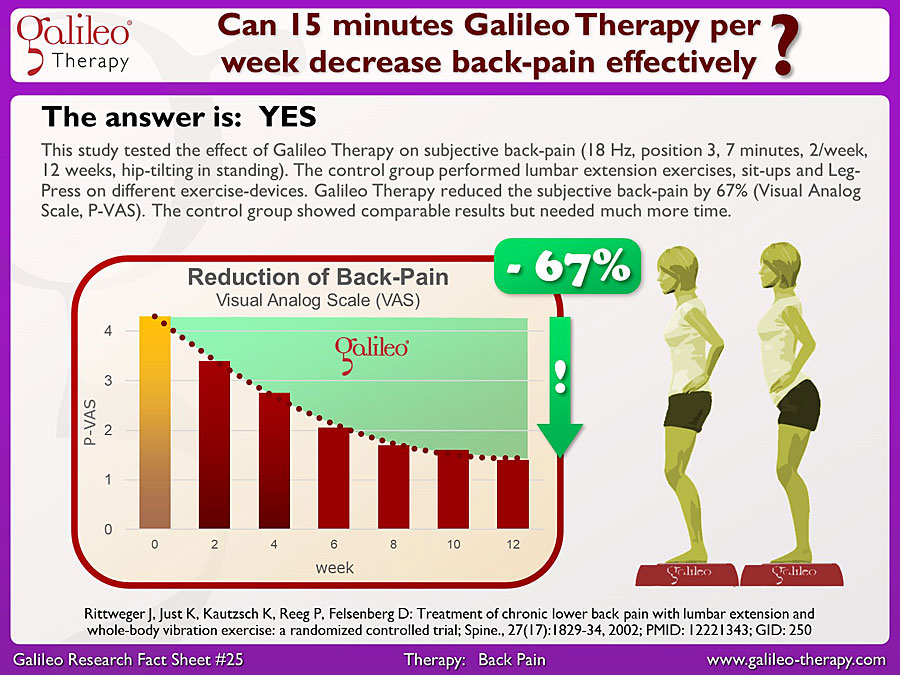Tag Archives: MechanoStimulation
This study examined the short-term effect of Galileo Therapy on Spinal Excitability which is the sensitivity of the stretch reflex to a defined external stimulus (1 Min., 22Hz, pos. 2, 30° flexed knee). There is an obvious decrease of 60% during the Galileo Therapy and even 10 minutes after the training still a decrease of over 25%. This effect is one of the main reasons why Galileo Therapy is effective in reduction of Spasticity...
Galileo Research Facts No. 36: Can Galileo Therapy improve muscle function in patients with chemotherapy-related Neuropathy?
This study shows the effect of Galileo Therapy on pain and muscle function in patients with Neuropathy due to chemotherapy (15 weeks, 1/week, 3x3min.,10-13 warm-up lying, 19-23Hz standing, 9-30Hz cool-down at 30° tilt). Both groups received 60 min. massage and mobilization plus 15 minutes functional training. The Galileo Therapy group showed increased improvements in muscle function measured by chair rising time...
Galileo Research Facts No. 35: Can Galileo Training increase jumping performance after only 10 days?
The first Whole Body Vibration Training study ever, done with Galileo in 1998. It shows the effects of Galileo Training on Jumping performance in active handball and water polo players (26Hz, pos. 5, 5*2 min., 10 days, 1) forefoot 2) 45° squat 3) 90°squat 4/5) 90°squat one legged). Both groups performed additional 20 min. warmup and 5 min. jump training. Only the Galileo Training group showed jump improvements of up to 12%...
Galileo Research Facts No. 29: Can Galileo Training change muscle histology after only 12 training sessions?
This study shows the changes of muscle histology and muscle function using exhaustive Galileo Training for athletes (25Hz, 2 sets squats until exhaustion (max. 3 min.) with 40% (start) to 80% (end) body weight extra load, pos. 3-4, 2/week, 6 week). The Galileo group increase muscle fiber cross-section by 95% (Type 2) and 23% (Type 1) and the 1 Repetition Maximum (1RM) by 25% (from 111kg to 141kg)...
Galileo Research Facts No. 28: Can Galileo Training compensate the negative effects of HIT on anaerobic power?
This study used Galileo Training in rest phases between High Intensity Training (HIT) intervals to reduce loss of anaerobic power (20 Sessions HIT, HIT+18Hz/HIT+30Hz, 3 min., pos. 3, knees half bent). Galileo Training during rest phases could compensate the HIT associated loss of anaerobic power and MyHC-2x fiber cross-sectional area completely. Galileo Training at 18 Hz showed about 20% higher effects than training at 30Hz...
Galileo Research Facts No. 27: Can Galileo Training reduce back-pain and fall-risk at the same time?
Diese Studie untersucht ob Galileo Therapie bei Patienten mit chronischem Rückenschmerz diesen und das Sturzrisiko reduzieren sowie die Balance verbessern kann (18 Hz, 5 Min., 2/Woche, 12 Wochen, leicht gebeugte Knie, Pos. 2). Die Kontrollgruppe führte umfangreiche Rückengymnastik durch. Die Galileo Gruppe verbesserte sich deutlich (Verbesserung Sturzindex 58%, Schmerz-Skala 52%) bei kürzerer Therapiedauer...
Galileo Research Facts No. 26: Can Galileo Training improve muscle power significantly even in the aged?
This study tested the effect of Galileo Therapy on muscle power using the chair rising test for geriatric out-patients (age 61-85, 27 Hz, bent knees, 3*2 minutes, 3 per week, 8 weeks). The Galileo Therapy group decreased chair rising time in average by 18% (in 34 patients improvement of up to 36%) the control group of the cross-over designed study did not show any significant changes...
Galileo Research Facts No. 25: Can 15 minutes Galileo Therapy per week decrease back-pain effectively?
This study tested the effect of Galileo Therapy on subjective back-pain (18 Hz, position 3, 7 minutes, 2/week, 12 weeks, hip-tilting in standing). The control group performed lumbar extension exercises, sit-ups and Leg-Press on different exercise-devices. Galileo Therapy reduced the subjective back-pain by 67% (Visual Analog Scale, P-VAS). The control group showed comparable results but needed much more time.
Galileo Research Facts No. 23: Is oxygen uptake during Galileo Training independent from frequency and amplitude?
This study reports the influence of frequency and amplitude during Galileo Training on the oxygen uptake (1 min., 18-34Hz, position 1.5 to 3.5, active standing at 170°). The results show that with increasing frequency and amplitude oxygen consumption during Galileo Training can be increased up to 170%. The effect of higher increasing frequencies dominated the effect of increasing amplitude...
Galileo Research Facts No. 21: Does blood-flow during Galileo Training increase with frequency and Amplitude?
This study reports the influence of frequency and amplitude during Galileo Training on the blood-flow (1 min., 5-30Hz, position 2.5 and 4.5, static squatting). The results show that with increasing frequency and increasing amplitude blood-flow velocity during Galileo Training can be increased by 220% to 420%...
